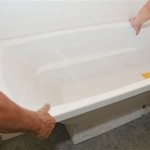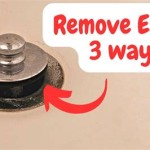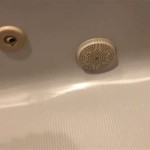Do You Waterproof Under a Bathtub?
Waterproofing under a bathtub is a crucial step in bathroom construction and renovation, often overlooked yet essential for preventing costly water damage. While the bathtub itself provides a primary barrier against water spillage, it's not infallible. Leaks can occur from cracks, faulty plumbing, or simply water escaping around the edges of the tub. Waterproofing the underlying structure mitigates the risk of these leaks causing significant problems.
The consequences of neglecting to waterproof under a bathtub can be substantial. Water seeping into the subfloor can lead to rot, mold growth, and structural damage. This can necessitate extensive and expensive repairs, including replacing subflooring, joists, and even sections of the ceiling below the bathroom. Furthermore, mold growth presents a health hazard, particularly for individuals sensitive to allergens.
Several methods are available for waterproofing under a bathtub. The most common approach involves applying a waterproof membrane to the subfloor and walls surrounding the tub. These membranes are typically made from a flexible, waterproof material such as polyethylene or chlorinated polyethylene (CPE). They are applied to the surface and carefully sealed around all penetrations, including drainpipes and plumbing fixtures.
Liquid-applied waterproofing membranes are another popular option. These membranes are typically formulated from polymers or asphalt and are applied as a liquid, forming a seamless, waterproof barrier. They are particularly useful in complex areas where sheet membranes may be difficult to install, such as around corners and curves.
Cement backer board is a rigid substrate commonly used in conjunction with waterproofing membranes. While not waterproof on its own, cement backer board provides a stable and water-resistant surface for the membrane to adhere to. It also helps to protect the membrane from damage during the installation of the bathtub and surrounding tile.
Choosing the right waterproofing method depends on several factors, including the type of bathtub, the condition of the subfloor, and the budget. For standard alcove bathtubs, a simple sheet membrane may suffice. However, for more complex installations, such as freestanding tubs or tubs with custom surrounds, a liquid-applied membrane may be a better option. Consulting with a qualified plumbing professional is recommended to determine the most appropriate method for a specific project.
The process of waterproofing under a bathtub typically begins with preparing the surface. This involves cleaning the subfloor and ensuring that it is level and free of any debris. If the subfloor is damaged or uneven, it may need to be repaired or replaced before proceeding with the waterproofing process.
Once the surface is prepared, the chosen waterproofing membrane is applied. For sheet membranes, this involves carefully cutting the membrane to size and adhering it to the surface using the appropriate adhesive. For liquid-applied membranes, the membrane is typically brushed or rolled onto the surface, ensuring complete coverage and consistent thickness.
Regardless of the method used, it's crucial to pay close attention to detail during the installation process. Any gaps or imperfections in the waterproofing layer can compromise its effectiveness and potentially lead to leaks. It's particularly important to ensure that the membrane is properly sealed around all penetrations, such as drainpipes and plumbing fixtures.
After the waterproofing membrane is installed, it's typically tested to ensure its integrity. This may involve filling the bathtub with water and observing for any leaks. Alternatively, a specialized testing method, such as a flood test, may be performed by a qualified professional.
Regular maintenance and inspection are essential to ensure the long-term effectiveness of bathtub waterproofing. Periodically inspecting the area around the bathtub for signs of leaks or water damage is recommended. Any signs of leakage should be addressed promptly to prevent further damage. Additionally, ensuring adequate ventilation in the bathroom can help to prevent moisture buildup and minimize the risk of mold growth.
Building codes often mandate specific requirements for bathroom waterproofing. These codes are designed to ensure that bathrooms are constructed in a manner that protects against water damage and maintains structural integrity. It's crucial to consult local building codes and obtain any necessary permits before undertaking a bathroom renovation project that involves waterproofing.
Investing in proper waterproofing under a bathtub is a cost-effective measure that provides long-term protection against water damage. While the initial cost of waterproofing may seem like an added expense, it pales in comparison to the potential cost of repairing extensive water damage. By taking the time to properly waterproof under a bathtub, homeowners can safeguard their investment and enjoy a worry-free bathroom for years to come.

Waterproof Bathtub Shower Walls Over Drywall

How To Install A Bathtub Make It Rock Solid 16 Steps With Pictures Instructables

Waterproof Bathtub Shower Walls Over Drywall

A Diyer S Guide To Waterproofing And Tiling Tub Surround Ugly Duckling House

How To Install Waterproof A Bathtub With Drain S

How To Waterproof A Bathtub Diy At Bunnings
Waterproofing Bathroom Floor With Schluter Ditra 2025

How To Install A Bathtub Make It Rock Solid 16 Steps With Pictures Instructables

Shower With Bathtub Ameripro Remodeling

Five Good Reasons To Waterproof Your Bathroom








